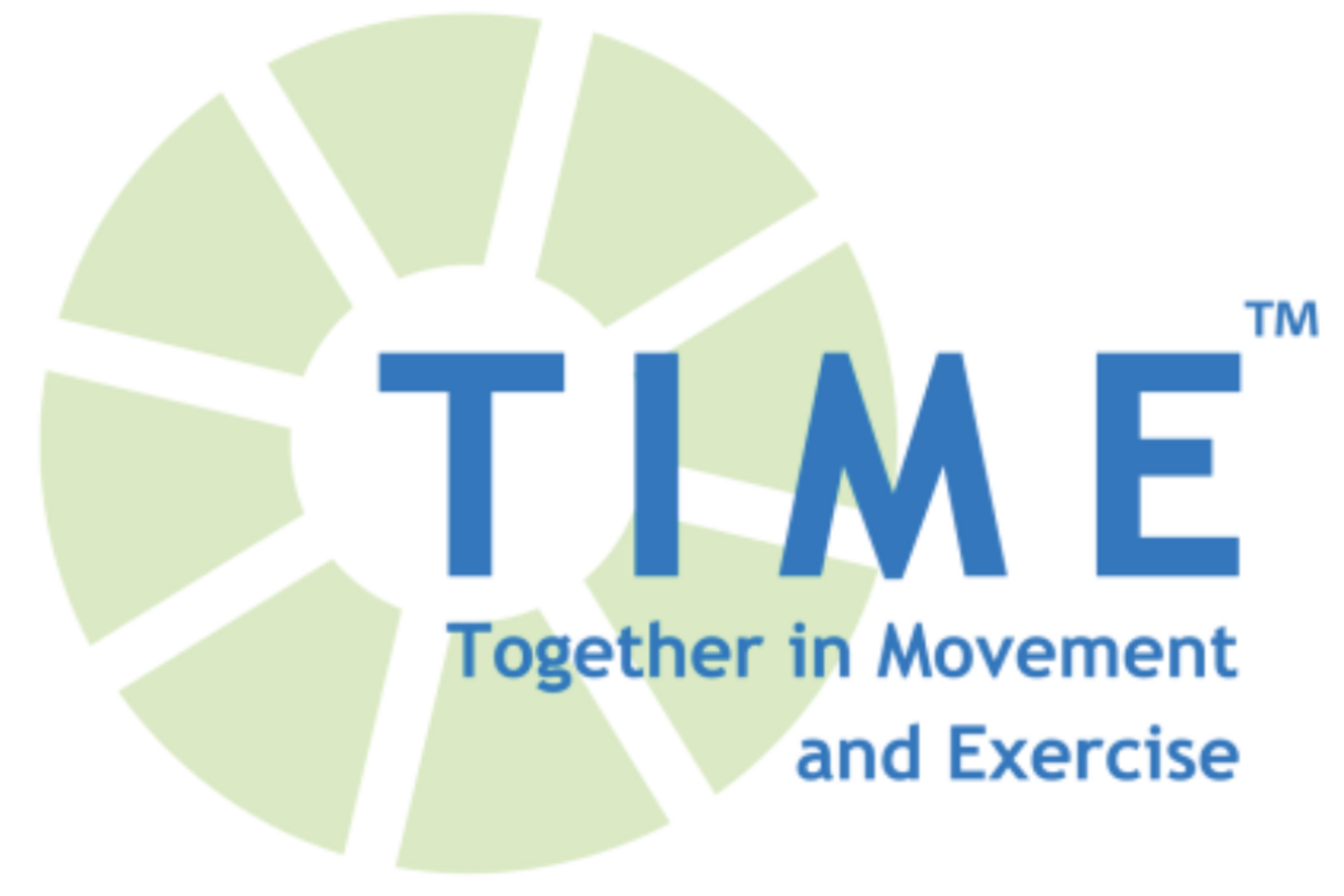Main Second Level Navigation
Breadcrumbs
- Home
- Research
- Programs of Research
- Knowledge to Action Research
- Together in Movement and Exercise (TIME): A 3-Site Pilot Randomized Trial
Together in Movement and Exercise (TIME): A 3-Site Pilot Randomized Trial

Full Project Title
A task-oriented, community-based exercise program incorporating a healthcare-community partnership to improve function post-stroke: The Together in Movement and Exercise (TIMETM) 3-site pilot randomized trial
Trial Registration: http://www.clinicaltrials.gov. Unique identifier: NCT03122626
Background
Chronic health conditions, such as stroke, and multiple sclerosis, can lead to persistent balance and mobility limitations that limit the ability of older adults to participate in meaningful activities, including physical activity. People with mobility challenges often need assistance from caregivers when performing activities of daily living, which can negatively influence caregiver health. Despite the potential for community-based exercise programs supported through healthcare-community partnerships (CBEP-HCPs) to improve function post-stroke, insufficient trial evidence limits widespread program implementation and funding.
Objectives
We evaluated the feasibility and acceptability of a CBEP-HCP called the “Together in Movement and Exercise” or TIMETM program compared to a waitlist control group to improve everyday function among people post-stroke.
Methods
We conducted a 3-site, pilot randomized trial with blinded follow-up evaluations at 3, 6 and 10 months. Community-dwelling adults able to walk 10 metres were stratified by site and gait speed and randomised to the TIMETM program or a waitlist control group. The TIMETM program involved a 1-hour, group exercise class, with repetitive and progressive practice of functional balance/mobility tasks, twice a week for 12 weeks. We offered the TIMETM program to the waitlist group at 10 months. We interviewed 13 participants and 9 caregivers post-intervention and triangulated quantitative and qualitative results. Study outcomes included feasibility of recruitment, interventions, retention, and data collection, and potential effect on everyday function.
Results and Outputs
Thirty-three people with stroke were randomized to the intervention (n=16) or waitlist group (n=17). We recruited 1-2 participants/month at each site. Participants preferred being recruited by a familiar healthcare professional. Participants described a 10- or 12-month wait in the control group as too long. The exercise program was implemented per protocol across sites. Five participants (31%) in the intervention group attended fewer than 50% of classes for health reasons. In the intervention and waitlist group, retention was 88% and 82% respectively, and attendance at 10-month evaluations was 63% and 71%, respectively. Participants described inclement weather, availability of transportation, and long commutes as barriers to attending exercise classes and evaluations. Among participants in the TIMETM program who attended at least 50% of classes, quantitative and qualitative results suggested an immediate effect of the intervention on balance, balance self-efficacy, everyday function, and overall health.
Team Members
Principal Investigators
- Nancy Salbach, University of Toronto
Co-investigators
- Mark Bayley, University Health Network
- Jill Cameron, University of Toronto
- Susan Hunter, Western University
- Susan Jaglal, University of Toronto
- Rahim Moineddin, University of Toronto
- Walter Wodchis, University of Toronto
Knowledge Users
- Karen Brunton, University Health Network
- Jo-Anne Howe, University Health Network
- Alda Tee, Central East Stroke Network
- Joanne Zee, University Health Network
Partners
- Ontario Stroke Network
Funding
- Heart & Stroke Foundation of Canada
- Government of Ontario
- Ontario Physiotherapy Association
- University of Toronto
Knowledge Translation
- Aravind G*, Bashir K*, Cameron JI, Howe J, Jaglal SB, Bayley MT, Teasell RW, Moineddin R, Zee J, Wodchis WP, Tee A, Hunter S, Salbach NM. Community-based exercise programs incorporating healthcare-community partnerships to improve function post-stroke: feasibility of a 2-group randomized controlled trial. Pilot and Feasibility Studies. 2022;8:88.
Foundational Research
- Salbach NM, Howe J, Baldry D, Merali S*, Munce SEP*. Considerations for expanding community exercise programs incorporating a healthcare-recreation partnership for people with balance and mobility limitations: a mixed methods evaluation. BMC Research Notes. 2018. DOI: https://doi.org/10.1186/s13104-018-3313-x
- Skrastins O*, Tsotsos S*, Aqeel H*, Qiang A*, Renton J*, Howe J, Tee A, Moller J, Salbach NM. Fitness coordinators’ and fitness instructors’ perspectives on implementing a task-oriented community exercise program within a healthcare-recreation partnership for people with balance and mobility limitations: a qualitative study. Disability & Rehabilitation, 2019. http://dx.doi.org/10.1080/09638288.2019.1570357
- Merali S*, Cameron JI, Barclay R, Salbach NM. Experiences of people with stroke and multiple sclerosis and caregivers of a community exercise program involving a healthcare-recreation partnership. Disability & Rehabilitation 2019. https://www.tandfonline.com/eprint/VnbrsW76ak8qVWjtA6s5/full?target=10.1080/09638288.2018.1519042
- Merali S*, Cameron JI, Barclay R, Salbach NM. Characterising community exercise programmes delivered by fitness instructors for people with neurological conditions: a scoping review. Health and Social Care in the Community 2016; 24(6), e101-e116. DOI: 10.1111/hsc.12282
- Lau C*, Chitussi D*, Elliot S*, Giannone J*, McMahon MK*, Sibley KM, Tee A, Matthews J, Salbach NM. Facilitating community-based exercise for people with stroke: cross-sectional e-survey of physical therapy practice and perceived needs. Physical Therapy 2015;96:469-478. DOI: 10.2522/ptj.20150117
- Salbach NM, Howe J, Brunton K, Salisbury K, Bodiam L. Partnering to increase access to community exercise programs for people with stroke, acquired brain injury or multiple sclerosis. Journal of Physical Activity and Health 2014; 11, 838-845. DOI: http://dx.doi.org/10.1123/jpah.2012-0183
Webinars
- What are fitness coordinators’ and instructors’ experiences working with healthcare partners in the Together in Movement and Exercise (TIME™) program? Presenter: Nancy Salbach. Sponsor: Ontario Central East Stroke Network.
- How does the TIMETM program affect the daily lives of participants with neurological conditions and their caregivers? Results of a qualitative study. Presenter: Nancy Salbach.
*Trainees